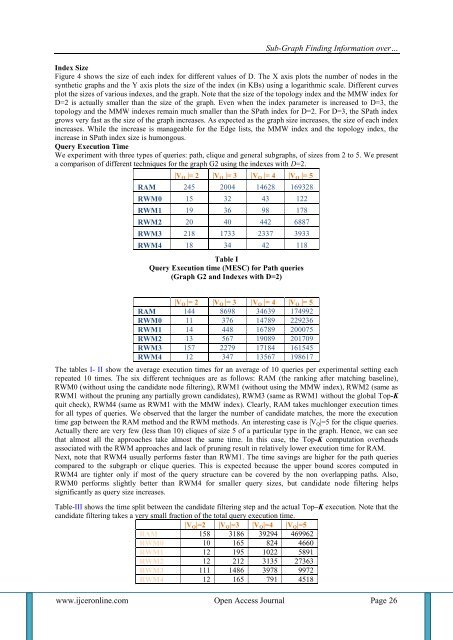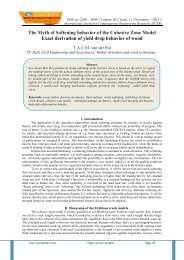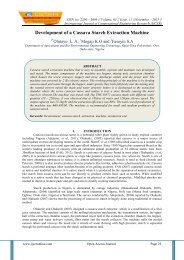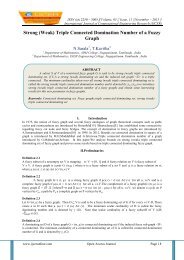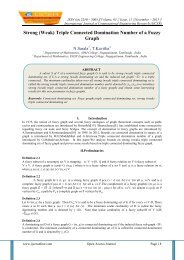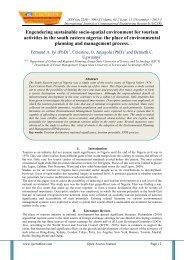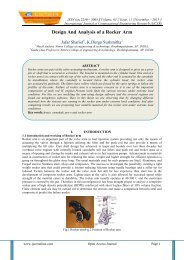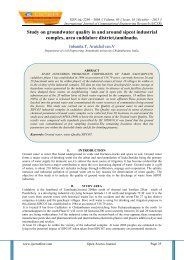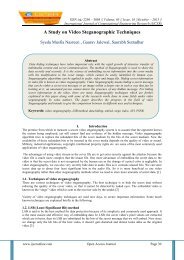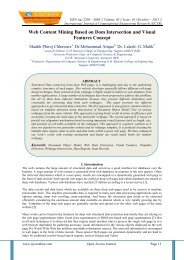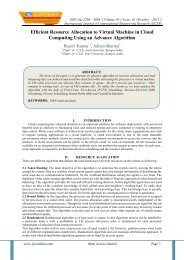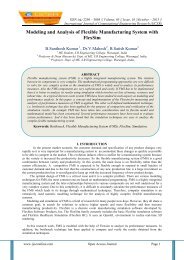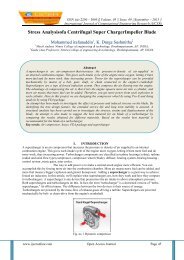Create successful ePaper yourself
Turn your PDF publications into a flip-book with our unique Google optimized e-Paper software.
Sub-Graph Finding Information over…<br />
Index Size<br />
Figure 4 shows the size of each index for different values of D. The X axis plots the number of nodes in the<br />
synthetic graphs and the Y axis plots the size of the index (in KBs) using a logarithmic scale. Different curves<br />
plot the sizes of various indexes, and the graph. Note that the size of the topology index and the MMW index for<br />
D=2 is actually smaller than the size of the graph. Even when the index parameter is increased to D=3, the<br />
topology and the MMW indexes remain much smaller than the SPath index for D=2. For D=3, the SPath index<br />
grows very fast as the size of the graph increases. As expected as the graph size increases, the size of each index<br />
increases. While the increase is manageable for the Edge lists, the MMW index and the topology index, the<br />
increase in SPath index size is humongous.<br />
Query Execution Time<br />
We experiment with three types of queries: path, clique and general subgraphs, of sizes from 2 to 5. We present<br />
a comparison of different techniques for the graph G2 using the indexes with D=2.<br />
|V Q |= 2 |V Q |= 3 |V Q |= 4 |V Q |= 5<br />
RAM 245 2004 14628 169328<br />
RWM0 15 32 43 122<br />
RWM1 19 36 98 178<br />
RWM2 20 40 442 6887<br />
RWM3 218 1733 2337 3933<br />
RWM4 18 34 42 118<br />
Table I<br />
Query Execution time (MESC) for Path queries<br />
(Graph G2 and Indexes with D=2)<br />
|V Q |= 2 |V Q |= 3 |V Q |= 4 |V Q |= 5<br />
RAM 144 8698 34639 174992<br />
RWM0 11 376 14789 229236<br />
RWM1 14 448 16789 200075<br />
RWM2 13 567 19089 201709<br />
RWM3 157 2279 17184 161545<br />
RWM4 12 347 13567 198617<br />
The tables I- II show the average execution times for an average of 10 queries per experimental setting each<br />
repeated 10 times. The six different techniques are as follows: RAM (the ranking after matching baseline),<br />
RWM0 (without using the candidate node filtering), RWM1 (without using the MMW index), RWM2 (same as<br />
RWM1 without the pruning any partially grown candidates), RWM3 (same as RWM1 without the global Top-K<br />
quit check), RWM4 (same as RWM1 with the MMW index). Clearly, RAM takes muchlonger execution times<br />
for all types of queries. We observed that the larger the number of candidate matches, the more the execution<br />
time gap between the RAM method and the RWM methods. An interesting case is |V Q |=5 for the clique queries.<br />
Actually there are very few (less than 10) cliques of size 5 of a particular type in the graph. Hence, we can see<br />
that almost all the approaches take almost the same time. In this case, the Top-K computation overheads<br />
associated with the RWM approaches and lack of pruning result in relatively lower execution time for RAM.<br />
Next, note that RWM4 usually performs faster than RWM1. The time savings are higher for the path queries<br />
compared to the subgraph or clique queries. This is expected because the upper bound scores computed in<br />
RWM4 are tighter only if most of the query structure can be covered by the non overlapping paths. Also,<br />
RWM0 performs slightly better than RWM4 for smaller query sizes, but candidate node filtering helps<br />
significantly as query size increases.<br />
Table-III shows the time split between the candidate filtering step and the actual Top–K execution. Note that the<br />
candidate filtering takes a very small fraction of the total query execution time.<br />
|V Q |=2 |V Q |=3 |V Q |=4 |V Q |=5<br />
RAM 158 3186 39294 469962<br />
RWM0 10 165 824 4660<br />
RWM1 12 195 1022 5891<br />
RWM2 12 212 3135 27363<br />
RWM3 111 1486 3978 9972<br />
RWM4 12 165 791 4518<br />
www.ijceronline.com Open Access Journal Page 26


